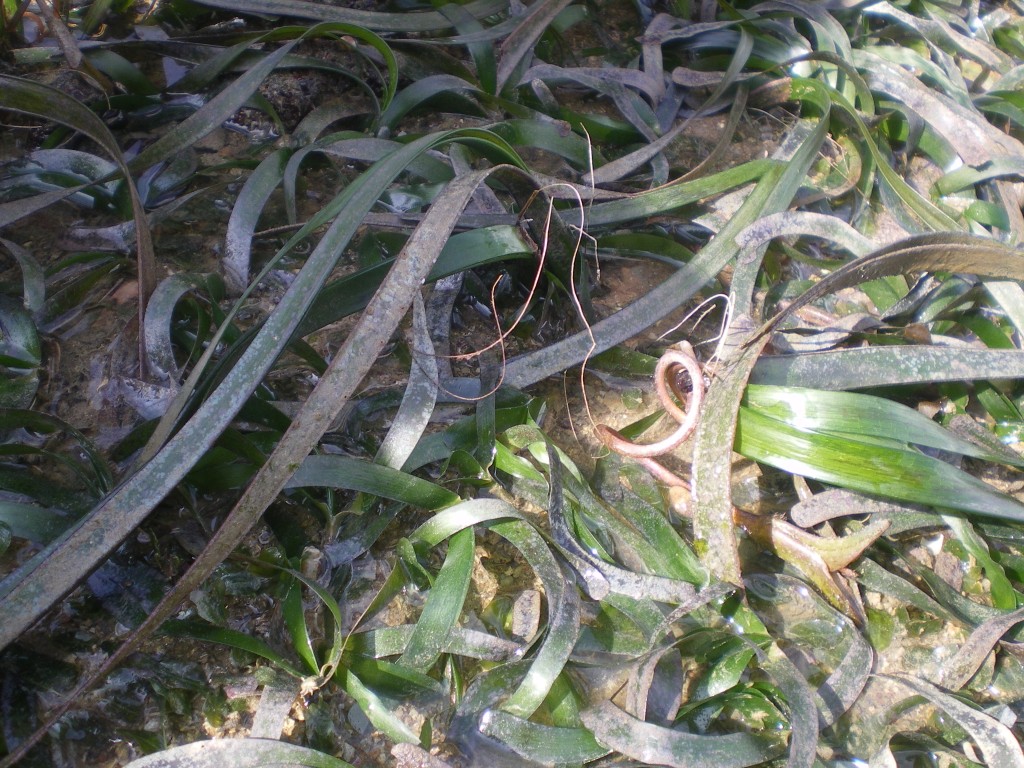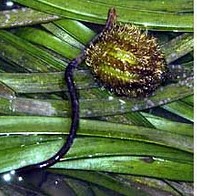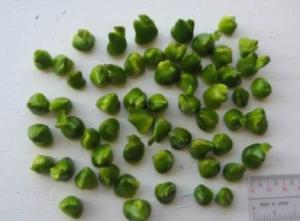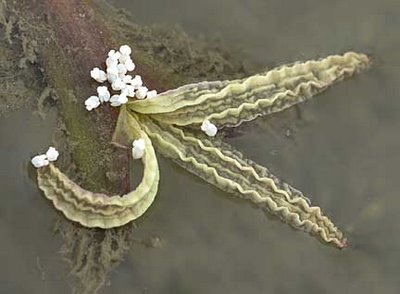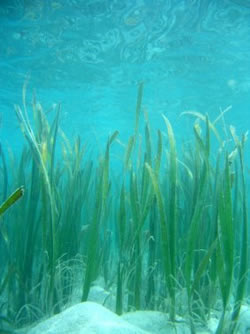It is said that all seaweed is edible but that’s not true. There’s at least one species that is not, Desmarestia ligulata. Why? Because it is laced with sulfuric acid though it is used to make pickles. While most seaweed is edible — I said nothing about being palatable — there is at least one edible sea grass, Tape Seagrass.
Actually one does not eat the Tape Seagrass but rather its large seeds, which taste like chestnuts when cooked. What drew my attention to Tape Seagrass is that it is a monotypic genus, that is, there is the only species in its genus. Some genera have hundreds of species if not thousands. Monotypic genera have one species each. You can read about monotypic genera here.
Tape Seagrass is found basically between Southeast Asia and Australia. Where it grows it provides a habitat for numerous sea creatures besides human food. It’s method of reproduction is a bit odd. Male flowers, looking like bits of Styrofoam, surface, aggregate, then float off looking for a receptive female blossom. It is a littoral species, that is, it lives on mudflats, or sand flats, part of its life submerged and part out of water. This does not necessarily mean Tape Seagrass seed pods are easy to collect. I dug many clams when young and slogging across mud flats for food is hard, exhausting, smelly work… though that does remind me of a line from a comic strip called B.C. by Johnny Hart: “The bravest man I ever saw was the first one to eat an oyster raw.”
Where Tape Seagrass grows it’s a wave breakers, protects some beaches, and is a preferred food of the Dugong, the only living relatives of the Manatees. Unexpectedly where it does grow is called “meadows.” Worldwide there’s some 72 species of sea grass. As mentioned Tape Seagrass provides good hiding places for small species, oxygenates the water, and is good at carbon sequestration to reduce any effects of global warming.
Botanically the species is Enhalus acoroides. Enhalus (en-HAL-us) is Dead Latin’s bastardization of Greek en halo meaning in salt. Acoroides (ah-koh-REE-these) is more obtuse. It means resembling Akoron or Akoros. Those were ancient names for Sweet Flag and Yellow Flag, strap-like plants that resemble the leaves of a cattail and grow in water.
Green Deane’s “Itemized” Plant Profile: Tape Seagrass
IDENTIFICATION: Enhalus acoroides: The leaves are very long and ribbon-like (30-150cm long, approximately 1-2cm wide) with many parallel veins and air spaces, generally dark green in colour and thick. Rolled leaf margins make the leaves tough (hard to tear), the rhizome are thick, with long black bristles and cord-like roots. Fruits are round and large (4-6cm in diameter) with dark, ribbed skin and 6-7 white seeds. When the ripe fruit bursts, the seeds are released and float for only about five hours before they start to sink. The seeds are estimated to be able to travel 25 miles. When the seeds settle, roots develop rapidly and the seeds germinate quickly.
TIME OF YEAR: Flowers year round
ENVIRONMENT: Littoral land, shore exposed at low tide often adjacent to mangrove forests. Widely distributed in the tropical parts of the Indian Ocean and the Western Pacific and very common in the Indo-Malay Archipelago and in the Philippines.
METHOD OF PREPARATION: The white seeds are eaten raw out of hand. Or they can be boiled or roasted, if the latter they have a chestnut like flavor. The plant itself smells sulphurous. If allowed to ret a strong, saltwater resistant fiber can be made from the remains.

